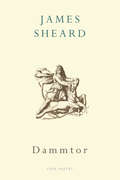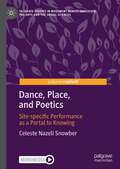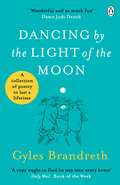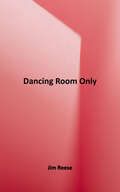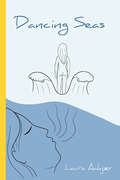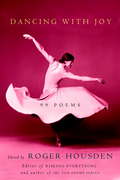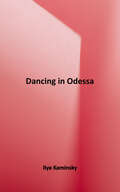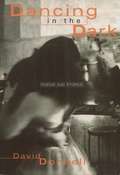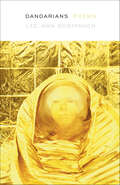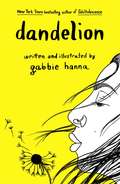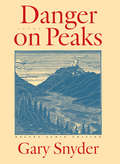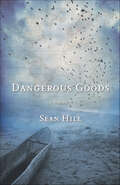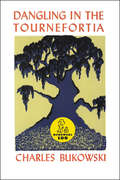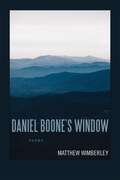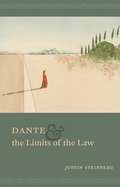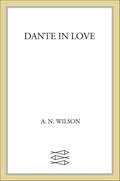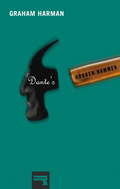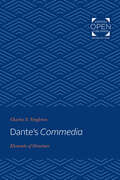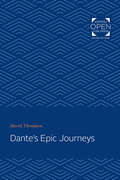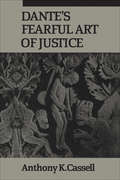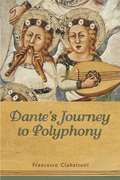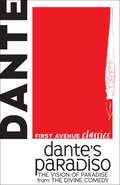- Table View
- List View
Dammtor
by James SheardDammtor is the old city gate and now the centre of ground transport for the great port of Hamburg. In James Sheard's second collection it is a 'station for midnights, hitched up on stone legs, hollow with sunken light' - a hub for the damaged and deracinated. These precise, wounded poems draw the reader through this desolate landscape - through sexual longing, sexual violence, bereavement and the beginning of hope through the birth of a son.Dammtor restlessly narrates the condition of maleness, looking for truth and music in a voice which is both urgent and unadorned. The poems are spoken in solitary places - late-night stations, hotel lobbies, car rides and empty woodland - but they are addressed to the living, the missing, the dead and the just-born. Personal and political narratives leak into the spaces of the poems to form a strange light which has something of the hallucinatory clarity of translations. The voice might be by turn elegaic, vicious, obsessive or bewildered as it explores its topic, but it is accompanied by an eye which will not - or, perhaps, cannot - blink. Finding tenderness amid brutality, Dammtor is a highly accomplished and remarkable collection.
Dance, Place, and Poetics: Site-specific Performance as a Portal to Knowing (Palgrave Studies in Movement across Education, the Arts and the Social Sciences)
by Celeste Nazeli SnowberThis book explores the relationship between the body, ecology, place, and site-specific performance. The book is situated within arts-based research, particularly within embodied inquiry and poetic inquiry. It explores a theoretical foundation for integration of these areas, primarily to share the lived experiences, poetry and dance which have come out of decades of sharing site-specific performances.
Dancing By The Light of The Moon: Over 250 poems to read, relish and recite
by Gyles BrandrethDiscover Dancing by the Light of the Moon, a collection of poetry to last you a lifetime - poems that will bring you joy, solace, celebration and love for every occasion'Gyles has discovered the secret of finding happiness' DAME JUDI DENCHIncludes an updated chapter of poems to bring you hope and happiness this year _______ A POEM CAN . . . Comfort · Challenge · Be a friend Stretch your vocabulary Help you sleep · Break the ice Find you a lover · Be utter nonsense Console · Make you laugh - or cry For every moment in your life there is a poem.In Dancing by the Light of the Moon we have a remarkable collection of over 250 best-loved poems in the English-speaking world.Allow Gyles Brandreth to be your guide to not only the wonders of poetry - and there are many - but also its practical uses in everyday life. Whether seeking some words to reflect your mood, wanting to celebrate or mark an occasion or simply looking for lines of comfort and joy in difficult times, this collection has everything for readers of poetry both young and old, novices and old hands alike, will love and return to again and again._______ 'Over 400 pages of top-notch poems by everyone from Shakespeare to Simon Armitage' Daily Mail 'A collection of poems that will transform your memory and change your life' Dr Max Pemberton
Dancing Room Only
by Jim ReeseDancing Room Only is a wild romp into the forgotten center of our people. With his signature rollicking style, a keen sense of humor, and an acute ear for dialect and voice, Reese archives the sinners and saints that haunt the Midwest and beyond. Author Kent Meyers writes of Reese's work: "In these poems, ordinary life with its children and neighbors crackles like a mirage, and shifts and opens, and we find we've been all along in San Quentin prison. What is it we just saw?-a five-year-old child swinging on the monkey bars, or a tattooed convict, crying? Reese's eye is the eye of a father, and he finds his world both alien and comforting. These are poems of praise and poems of warning, infused with love and latent violence. Reese makes us feel the threat throbbing inside the song." In Dancing Room Only: New and Selected Poems Reese is a well-traveled troubadour with Midwestern sensibility, and as the author of three widely-praised books of poetry, he knows how to blow our hearts sideways.
Dancing Seas
by Laura AakjærThis is a collection of savioursWithout whom I would not have survivedIt tells tales About heartbreak so severe one wasn’t sure one would survive itAnd of losing, and therefore feeling lostLosing, and therefore feeling empoweredIt’s about wanting to get better, but not sure if one ever can.This collection will prove that it is possibleBut that it is okay to feel like it isn’tI know becauseWhen the flood cameThe words taught me how to floatWhen the waves tossed me aroundI already knew how to flyDancing Seas, by the Danish writer Laura Aakjær, is composed of more than a hundred autobiographical poems divided into the themes of ‘Falling’, ‘Floating’ and ‘Flying’.Laura’s poems, most of them a few lines long, use their position on the page to enhance the impact of her precisely chosen words. Despite their brevity, they manage to encompass a wide variety of moods: from profound grief to swooning ecstasy; from a delicate wistfulness to a raging defiance.
Dancing With Joy: 99 Poem
by Roger HousdenIn his collectionRisking Everything, Housden addressed love’s many aspects. Now, inDancing with Joy, he assembles 99 poems from 69 poets that celebrate the many colors of joy. Anything can be a catalyst for joy, these poems reveal. For Wislawa Szymborska, the catalyst is a dream; for Robert Bly, being in the company of his ten-year-old son; for Gerald Stern, it is a grapefruit at breakfast; for Billy Collins, a cigarette. Dancing with Joyincludes English and Italian classical and romantic works; early Chinese and Persian verse; and poets from Chile, France, Sweden, Poland, Russia, Turkey, and India, plus a range of contemporary American and English poets. Whether inspiration is what you need, or an affirmation of what is already joyful in life,Dancing with Joyis a welcome treat for Housden’s numerous fans, as well as anyone looking for sheer happiness, marvelously expressed. From the Hardcover edition.
Dancing in Odessa
by Ilyá KamínskyWinner of the 2002 Dorset Prize, and recipient of the Ruth Lilly Fellowship, Ilya Kaminsky is a recent Russian immigrant and rising poetic star. Despite the fact that he is a non-native speaker, Kaminksy's sense of rhythm and lyic surpasses that of most contemporary poets in the English language. This magical, musical book of poems draws readers into its unforgettable heart, and Carolyn Forché writes simply "I'm in awe of his gifts."
Dancing with the Doe: New and Selected Poems, 1986-91
by Margaret RandallThis is the most recent poetry collection of this internationally celebrated socialist and feminist author. Covering the first five years after her return from over twenty years abroad, in Mexico, Cuba and Nicaragua, these poems describe Randall battling threats of deportation from the Immigration and Naturalization Service, waking from the nightmare of childhood incest, emerging as a lesbian, and continuing her feminist support of worldwide socialism in politically troubled times. Margaret Randall divides her time between her home in Albuquerque and lecture tours across the country.
Dandarians: Poems
by Lee Ann RoripaughHailed by Ishmael Reed as &“one of our brightest talents,&” Lee Ann Roripaugh&’s fourth collection of poems maps the illusory and ephemeral connection between identities and language.Based on sources as diverse as Heian-period Japanese women writers and the world of science fiction, and drawing on her own experience as a second-generation Japanese American, Dandarians explores a series of &“word betrayals&”—English words misunderstood in transmission from her Japanese mother that came to take on symbolic ramifications in her early years. Co-opting and repurposing the language of knowledge and of misunderstanding, and dialoguing in original ways with notions of diaspora and hybrid identities, these poems demonstrate the many ways we attempt to be understood, culminating in an experience of aural awe.At once wonderfully lyrical and strikingly acute, Dandarians will further establish Lee Ann Roripaugh as one of the most important and original voices in contemporary Asian American literature.
Dandelion
by Gabbie HannaFrom brilliant spins on children's rhymes to gut-punching mic-drops of truth to darkly funny dispatches from Rock Bottom, Gabbie&’s poems are a front-row seat to the sideshow that is her mind: her fears, insecurities, and the battles she wages with herself and the universe on a daily basis that serve as cathartic mirrors to our own. Dandelion is for people looking to feel less alone, to laugh at the absurdity of being human, and to imagine that something beautiful can come of all this pain. Cry alone no more.
Danger on Peaks: Poems
by Gary Snyder<P>We are proud to continue our project of publishing Deluxe Audio Editions of the poems of Gary Snyder, read by him. <P>When first published in 2004, it was the poet's first new collection of poems in twenty years. Perhaps his most personal, autobiographical collection, it begins with the young poet ascending Mt. St. Helens in 1945, a climb accidentally timed with the bombing of Hiroshima and Nagasaki. He was 15 years old. Almost sixty years later, after the great Buddhas at Bamiyan Valley were bombed and with the victims of the World Trade Center also "turned to dust," the poet composed a prayer while at Short Grass Temple in Senso-ji, a pilgrim on the path of Kannon, Goddess of Mercy. <P>This remarkable collection was greeted with broad praise, and as Julia Martin proclaimed, "Moving between relative and absolute ways of seeing, [Snyder] responds to the experience of global conflict and personal pain by reminding readers of the continuity of wildness, affirming the value of art, and invoking an ancient practice of wisdom and compassion."
Dangerous Goods: Poems
by Sean HillWINNER OF THE MINNESOTA BOOK AWARDFrom the poet whose stunning debut was praised as &“transcendent&” by Kevin Young and &“steadily confident&” by Carl Phillips, Dangerous Goods tracks its speaker throughout North America and abroad, illuminating the ways in which home and place may inhabit one another comfortably or uncomfortably—or both, simultaneously.From the Bahamas, London, and Cairo to Bemidji, Minnesota, and Milledgeville, Georgia, Sean Hill interweaves the contemporary with the historical, and explores with urgency the relationships among travel, migration, alienation, and home. Here, playful &“postcard&” poems addressed to Nostalgia and My Third Crush Today sit alongside powerful reflections on the immigration of African Americans to Liberia during and after the era of slavery. Such range and formal innovation make Hill&’s second collection both rare and exhilarating. Part shadowbox, part migration map, part travelogue-in-verse, Dangerous Goods is poignant, elegant, and deeply moving.
Dangling in the Tournefortia
by Charles BukowskiThere is not a wasted word in Dangling in the Tournefortia, a selection of poems full of wit, struggles, perception, and simplicity. Charles Bukowski writes of women, gambling and booze while his words remain honest and pure.
Daniel Boone’s Window: Poems (Southern Messenger Poets)
by Matthew WimberleyDaniel Boone’s Window, a new book of poetry by Matthew Wimberley, meditates on the past and future of contemporary Appalachia through explorations of both mythologized and actual landscapes. In poems that confront a region indelibly shaped by environmental turmoil, economic erasure, and the weight of an outside world intent on destroying it, Daniel Boone’s Window works to reclaim and reckon with the realities and complexities of Appalachia. Wimberley’s poetry seeks to dispel monolithic narratives of the region by capturing the rugged and the beautiful, approaching place with wonderment that subverts stereotype and blame.
Dante & the Limits of the Law
by Justin SteinbergIn Dante and the Limits of the Law, Justin Steinberg offers the first comprehensive study of the legal structure essential to Dante’s Divine Comedy. Steinberg reveals how Dante imagines an afterlife dominated by sophisticated laws, hierarchical jurisdictions, and rationalized punishments and rewards. He makes the compelling case that Dante deliberately exploits this highly structured legal system to explore the phenomenon of exceptions to it, crucially introducing Dante to current debates about literature’s relation to law, exceptionality, and sovereignty. Examining how Dante probes the limits of the law in this juridical otherworld, Steinberg argues that exceptions were vital to the medieval legal order and that Dante’s otherworld represents an ideal “system of exception.” In the real world, Dante saw this system as increasingly threatened by the dual crises of church and empire: the abuses and overreaching of the popes and the absence of an effective Holy Roman Emperor. Steinberg shows that Dante’s imagination of the afterlife seeks to address this gap between the universal validity of Roman law and the lack of a sovereign power to enforce it. Exploring the institutional role of disgrace, the entwined phenomena of judicial discretion and artistic freedom, medieval ideas about privilege and immunity, and the place of judgment in the poem, this cogently argued book brings to life Dante’s sense of justice.
Dante in Love: A Biography
by A. N. WilsonFor William Butler Yeats, Dante Alighieri was "the chief imagination of Christendom." For T. S. Eliot, he was of supreme importance, both as poet and philosopher. Coleridge championed his introduction to an English readership. Tennyson based his poem "Ulysses" on lines from the Inferno. Byron chastised an "Ungrateful Florence" for exiling Dante. The DivineComedy resonates across five hundred years of our literary canon. In Dante in Love, A. N. Wilson presents a glittering study of an artist and his world, arguing that without an understanding of medieval Florence, it is impossible to grasp the meaning of Dante's great poem. He explains how the Italian states were at that time locked into violent feuds, mirrored in the ferocious competition between the Holy Roman Empire and the Papacy. He shows how Dante's preoccupations with classical mythology, numerology, and the great Christian philosophers inform every line of the Comedy. Dante in Love also explores the enigma of the man who never wrote about the mother of his children, yet immortalized the mysterious Beatrice whom he barely knew. With a biographer's eye for detail and a novelist's comprehension of the creative process, A. N. Wilson paints a masterful portrait of Dante Alighieri and unlocks one of the seminal works of literature for a new generation of readers.
Dante's Broken Hammer
by Graham HarmanIn this book the founder of object-oriented philosophy transforms one of the classic poets of the Western canon, Dante Alighieri, into an edgy stimulus for contemporary continental thought. It is well known that Dante's poetic works interpret love as the moving force of the universe: as embodied in his muse Beatrice from La Vita Nuova onward, as well as the much holier persons inhabiting Paradiso. Likewise, if love is the ultimate form of sincerity, it is easy to interpret the Inferno as a brilliant counterpoint of anti-sincerity, governed by fraud and blasphemy along with the innocuous form of fraud known as humor (strangely absent from all parts of Dante's cosmos other than hell). In turn, the middle ground of Purgatorio is where Harman locates Dante's clearest theory of sincerity. Yet this is only the beginning. For while Dante provides a suitable background for the metaphysics of commitment found in such later thinkers as Pascal, Kierkegaard, Sartre, and Badiou, he also provides even more important resources for overcoming two centuries of philosophy shaped by Immanuel Kant.From the Trade Paperback edition.
Dante's Commedia: Elements of Structure
by Charles S. SingletonOriginally published in 1977. This book contains four essays by Professor Charles Singleton: "Allegory," "Symbolism," "The Pattern at the Center," and "The Substance of Things Seen." These four essays treat four dimensions of meaning essential to understanding the substance and special texture of the poetry of the Divine Comedy. One might speak of "facets" or "aspects" of meaning if such terms did not suggest surface reflections dependent on the way a work (as a jewel) is turned for inspection. But for Singleton, each dimension has a depth that reaches to the core and substance of Dante's poetry, so they are, in Singleton's view, elements of its structure.
Dante's Divine Comedy: A Biography
by Joseph LuzziThe life and times of Dante&’s soaring poetic allegory of the soul&’s redemptive journey toward GodWritten during his exile from Florence in the early 1300s, Dante Alighieri&’s Divine Comedy describes the poet&’s travels through hell, purgatory, and paradise, exploring the state of the human soul after death. His poema sacro, sacred poem, profoundly influenced Renaissance writers and artists such as Giovanni Boccaccio and Sandro Botticelli and was venerated by modern critics including Erich Auerbach and Harold Bloom. Dante&’s &“Divine Comedy&” narrates the remarkable reception of Dante&’s masterpiece, one of the most consequential religious books ever written.Tracing the many afterlives of Dante&’s epic poem, Joseph Luzzi shows how it left its mark on the work of such legendary authors as John Milton, Mary Shelley, and James Joyce while serving as a source of inspiration for writers like Primo Levi and Antonio Gramsci as they faced the most extreme forms of political oppression. He charts how the dialogue between religious and secular ideas in The Divine Comedy has shaped issues ranging from changing conceptions of women&’s identity and debates about censorship to the role of canonical literature in popular culture.An intimate portrait of a work that has challenged and inspired generations of readers, Dante&’s &“Divine Comedy&” reveals how Dante&’s strikingly original and controversial vision of the afterlife can help us define our spiritual beliefs, better understand ourselves, and navigate the complexities of modern life.
Dante's Epic Journeys
by David ThompsonOriginally published in 1974. This book on comparative literature represents the first extended attempt to relate Dante's major allegorical mode to classical and medieval interpretations of epic poetry rather than to patristic biblical exegesis. Dante's Epic Journeys is also the first comprehensive explanation of Dante's enigmatic Ulysses. Thompson strives to shed new light not only on Dante's allegory—and thus upon the whole troubled question of exactly what an allegory was thought to be—but also on the intricate relationship between poet and poem and between Dante's spiritual journeys and his written representation of those itineraries.
Dante's Fearful Art of Justice
by Anthony CassellDante's Fearful Art of Justice deals primarily with the symbolic significance of 'the state of souls after death' in various episodes of the Inferno, the first canticle of Dante's Divina Commedia. The fruitlessness of the Auerbach-Singleton approach to the poem is demonstrated by Professor Cassell's investigations, which are based on the belief that Dante used both the theological system of fourfold allegory and the preconfiguration-fulfilment pattern of history found in the Old and New Testaments. The author first deals with the history of contrapassum, 'just retribution,' as it appeared in philosophy and theology, and describes Dante's use of historical and artistic figuration, both classical and Christian. It is central to Cassell's aim to show how Dante believed that his portrayal of the damned revealed the justice of God. Critics have believed that the relation of sin to the suffering of the shades in Hell was tenuous or even arbitrary in many cases. Cassell shows, through a close examination of Dante's assimilation of the Classics (and their medieval interpretations), or patristics, and of traditional iconography, that there is an intimate metaphorical and artistic aptness in the poet's representation. Cassell relies at some points on art history, and thirty-four illustrations of frescoes, statuary, and illuminations from paleo-Christian times to the fourteenth century are therefore included.This volume will be of particular interest to medieval specialists, historians of the Renaissance and Reformation periods, and those concerned with European literature.
Dante's Inferno: The Vision of Hell from The Divine Comedy (First Avenue Classics ™ #Vol. 1)
by Dante AlighieriInferno is the first part of Italian poet Dante Alighieri's epic poem Divine Comedy. The allegory describes Dante's journey through the depths of Hell. He is led by the Roman poet Virgil down into the nine circles of Hell, each of which holds and punishes progressively worse sinners. From the First Circle, where unbaptized souls live in peaceful limbo, down to the Ninth Circle, where Satan is trapped in ice, Dante sees firsthand the consequence of unrepentantly sinning against God. Dante published his narrative poem between 1308 and 1321. This version is taken from an 1892 English edition, featuring British author Rev. H. F. Cary's blank verse translation and woodcut illustrations by French artist Gustave Doré.
Dante's Journey to Polyphony
by Francesco CiabattoniIn Dante's Journey to Polyphony, Francesco Ciabattoni's erudite analysis sheds light on Dante's use of music in the Divine Comedy. Following the work's musical evolution, Ciabattoni moves from the cacophony of Inferno through the monophony of Purgatory, to the polyphony of Paradise and argues that Dante's use of sacred songs constitutes a thoroughly planned system. Particular types of music accompany the pilgrim's itinerary and reflect medieval theories regarding sound and the sacred. Combining musicological and philological scholarship, this book analyzes Dante's use of music in conjunction with the form and content of his verse, resulting in a cross-discipline analysis also touching on Italian Studies, Medieval Studies, and Cultural History. After moving from infernal din to heavenly harmony, Ciabattoni's final section addresses the music of the spheres, a theory that enjoyed great diffusion among the early middle ages, inspiring poets and philosophers for centuries.
Dante's Paradiso: The Vision of Paradise from The Divine Comedy (First Avenue Classics ™)
by Dante AlighieriParadiso is the third and final part of Italian poet Dante Alighieri's epic poem Divine Comedy and describes Dante's journey through heaven. He is now led by Beatrice, who joined him at the end of Purgatorio. Beatrice takes Dante into the nine celestial spheres of Heaven. From the First Sphere, where they find those who were good but did not keep their vows, to the Ninth Sphere and the Empyrean, the home of the angels and God, Dante experiences the blessings given to those who live a life faithful to God. Dante wrote his narrative poem between 1308 and 1321. This version is taken from a 1901 English edition, featuring British author Rev. H. F. Cary's blank verse translation and woodcut illustrations by French artist Gustave Doré.
